Why Indians continue to live in joint families
- Published
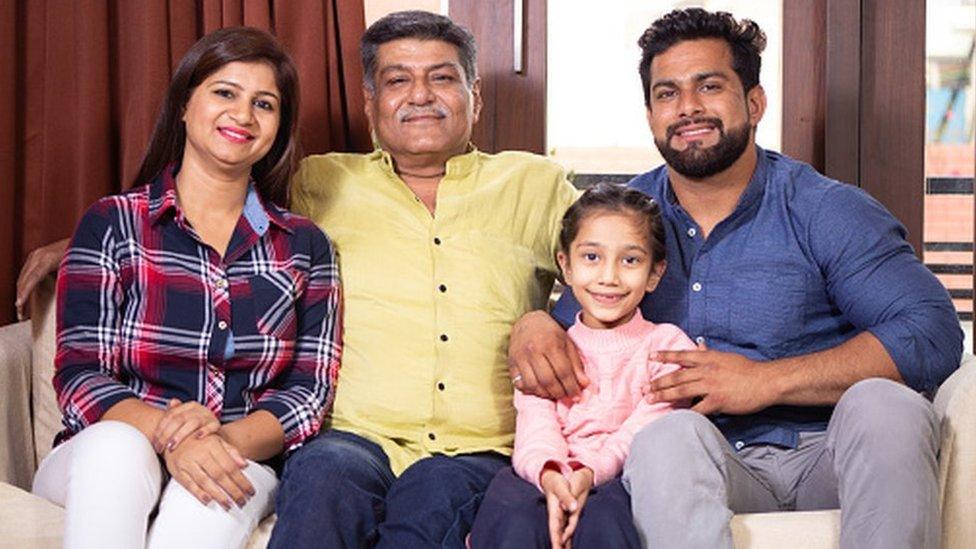
Family ties are strong in India
The Indian family, wrote novelist VS Naipaul, was a clan that gave protection and identity and "saved people from the void".
Not much has changed, as recent research shows.
Many scholars, for example, have believed that with economic growth, urbanisation, education and cultural changes, India's fabled joint family system would slowly disintegrate. Far from it, suggests research by Etienne Breton, a demographer and a visiting fellow at Cornell University, who has studied the relationship between modernisation and household changes in India.
He says that contrary to predictions, India's nuclear households have increased only modestly.
There's also no evidence of a significant decline in the average household size in India since the beginning of the 20th Century. Marriage is universal, the divorce rate is low, and there are few single-person households because of adults remaining single and childless. Demographic conditions for joint family households remain strong.
"India drastically challenges the understanding of family change," Dr Breton told me.
His recent work looks at parents living with their married sons. In India, married women rarely drive household separation all on their own, although they may influence their husband's decision.
A nuclear household in India is typically formed when sons set up their own home before their father's death. Once one parent - usually the father - passes away, sons still overwhelmingly take care of their widowed parent, even if they had been living in a nuclear household before.
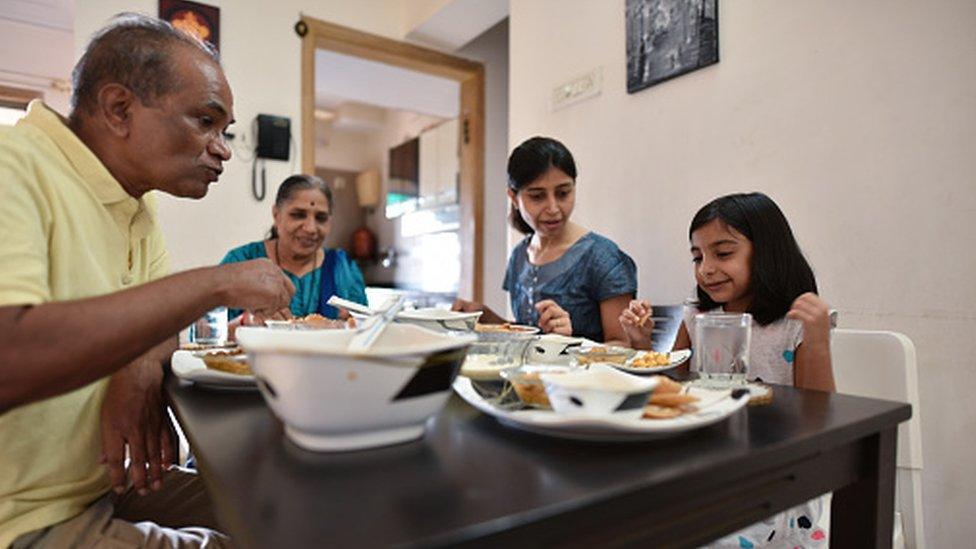
Data from India's National Sample Survey (NSS), the oldest continuing household survey of its kind in the developing world, shows more than 50% of all people aged 65 years and above are currently married, and roughly 45% - mainly women - are widowed. An overwhelming majority - around 80% - of elderly widows and widowers live with their children.
But only 40% of elderly couples live either without children or only with their unmarried children. This number has been increasing slowly - a six percentage points rise over 25 years.
"This is the best evidence we have of the modest increase in nuclear households in India," Dr Breton says.
One major reason why more young people continue to live with their parents is the increase in life expectancy - a 30-year-old man is more likely to live with at least one surviving parent in 2020 than in 1980.
Slow pace of urbanisation is another reason. Around 35% of Indians live in urban areas, compared to 60% of the Chinese. Even if India's census wrongly classifies many urban areas as rural as some researchers believe, the data does not suggest that cities have more nuclear homes than villages.
Alice Evans, a social scientist at King's College London who is researching a book on gender equality, believes Indians continue to live in joint families because strong family bonds encourage family business and low employment of women which, in turn, strengthens family ties. Also, housing costs make it difficult to live alone.
Indian families were not exceptional. In 1900, says Dr Evans, almost all Chinese, Japanese, Korean and Taiwanese families were possibly as extended as Indian ones. Independent living was rare.
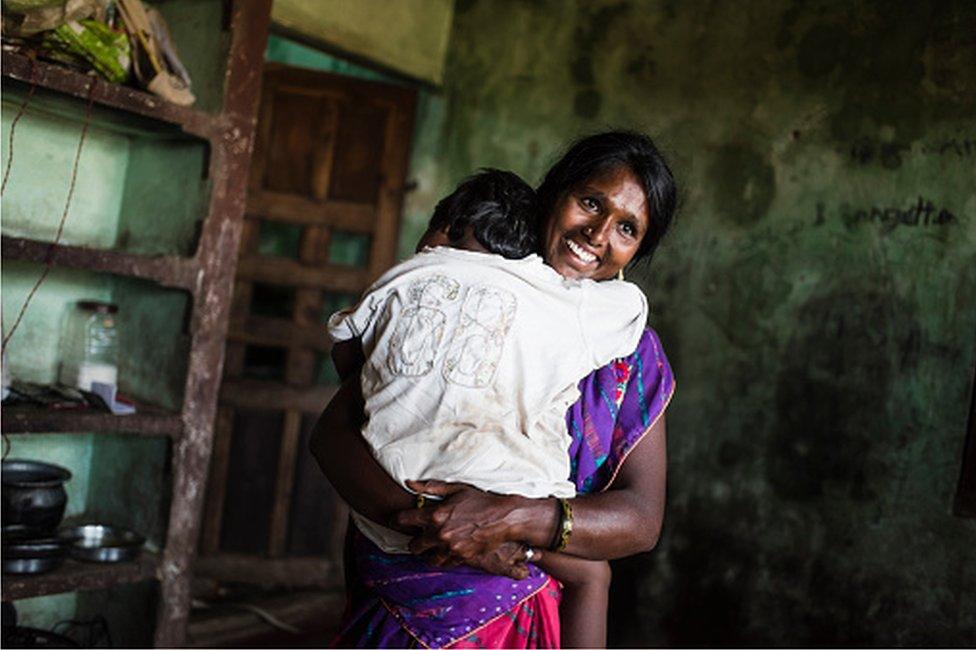
The poor are more likely to live in nuclear families
"East Asian families had strong family bonds just like India. But over 20th Century, they became more nuclear because of non-family employment, rural-urban migration, and female employment," Dr Evans told me. Adults still support their parents, but "through remittances rather than co-residence".
Employment of women also holds a key to families becoming more nuclear. Again, East Asia offers a good contrast.
As large numbers of women in Japan, Korea, Taiwan and China went to work over the last century, young double-income couples sought economic independence.
South Korea, for example, invested hugely in large firms. By working together on the factory floor, living in dormitories, and protesting for rights, workers "came to develop class consciousness and forged ties beyond the family", says Dr Evans.
With economic independence, women would have fewer children which, in turn, would make it easier for them to work outside.
Dr Evans believes South Asia is a study in contrast.
"Female employment here is associated with deprivation," she says. "Women in rural areas gain status by withdrawing from the labour market, a striking similarity with Western Europe in the early phases of the Industrial Revolution. And even if rural women want to work, opportunities are declining due to mechanisation of agriculture." The low female employment is a brake on economic independence for young couples.
"If women are not going out for work, broadening their networks, they remain more rooted in the family," says Dr Evans.
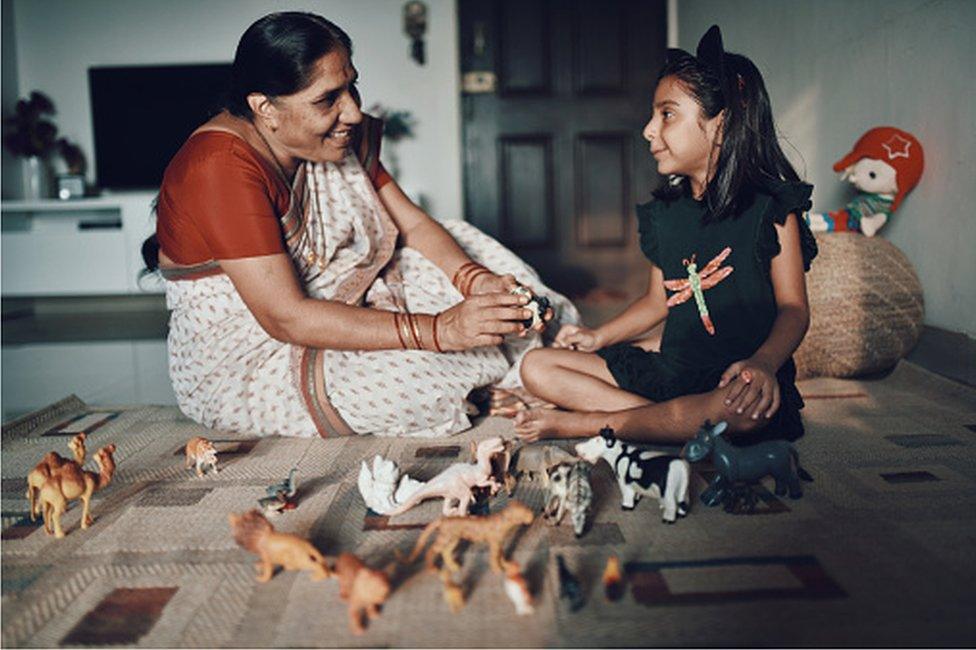
The elderly often stay with their married sons and take care of grandchildren
To be sure, India is not unusual in this, given its level of GDP. Extended families are more common in many middle and low-income countries: a study by Steven Ruggles and Misty Heggeness of census data for 15 developing countries found no general decline in generations of families staying together. , external
Yet, this doesn't fully explain the story of the evolving but complex Indian family.
Tulsi Patel, a sociologist who's written extensively on Indian families, says even defining a nuclear family in India is sometimes tricky.
"Parents typically move from one son's home to another in old age to give their grandchildren company and to be looked after by their children. When the children move abroad, they live with both their daughters and sons and look after grandchildren. How do you categorise these fluid off-and-on joint households?" Dr Patel told me.
What is most striking though is that contrary to popular perception, more of the poorest Indians live in nuclear families than the affluent do.
Dr Breton found that since the early 2000s, among married men in their 30s, uneducated farmers are more likely to live in nuclear households than college-educated salaried workers.
The poor are more likely to form nuclear households because they face fewer constraints - parents don't have property to control their children, poor families may buy smaller houses, and they have fewer incentives to live together because of the dwindling incomes from family farms or small businesses.

Strong family bonds encourage family business
Dr Breton says at "older ages, nuclear households have been most prevalent among uneducated labourers and have increased sharply among farmers".
"This suggests that the strongest driver of household nucleation in India has not been the emergence of the modern elite, but the economic stagnation or pauperisation of vulnerable segments of the population who have been left behind by modernisation," he says.
To be sure, Indian families are far from inert and unchanging.
Women are slowly gaining power while choosing their spouses in arranged marriages. Ageing parents who are economically self-sufficient are increasingly choosing to reside separately.
With declining number of children - with one son or no son at all - there will be, what Dr Breton, says "a strong demographic against formation of joint households". It will be interesting to see whether parents will increasingly turn to their married daughters for old age support and co-living, say researchers.
However, in the end, as Dr Breton says, the poor rather than the educated elite may well be driving real changes in the Indian family.
- Published3 December 2018
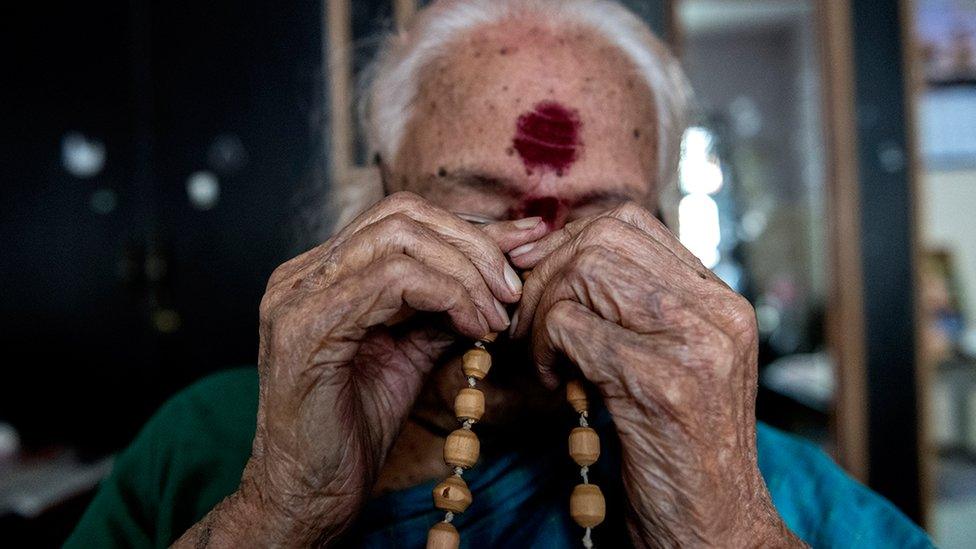
- Published10 June 2020

- Published13 August 2020

